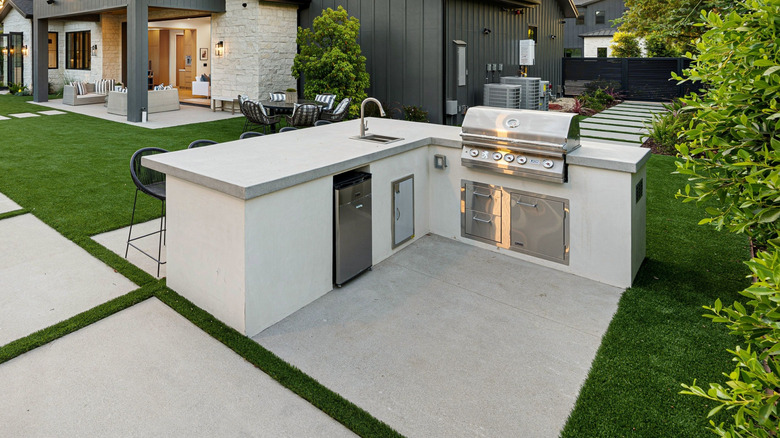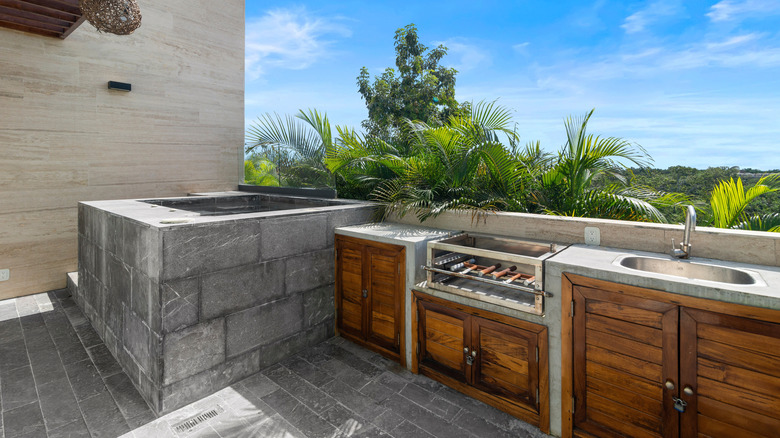Why You Should Use Microcement To Make Your Outdoor Countertop
Dreaming of revamping your gorgeous outdoor entertainment space? Maybe you want to upgrade your grilling station, add a cocktail corner, or even do a full-scale renovation on your outdoor kitchen to bring your backyard oasis to life. If so, the top of your wishlist should absolutely include refreshing your outdoor kitchen island or countertop. But choosing the best material for this feature isn't all that cut-and-dry. You need this surface to be stylish, durable, and weatherproof to endure all the sun, wind, and storms that may come its way. Concrete, tile, and natural stone are among the most popular materials for outdoor countertops, but microcement is rising in popularity, and for good reason. That's because choosing a microcement outdoor countertop comes with a wealth of benefits, like versatility, strength, longevity, and design.
So, what is microcement? It's a cement-based decorative coating that can be applied to existing surfaces, including marble, tile, hardboard, cement, plywood, plasterboard, and plaster. This means you can slap a layer on your existing outdoor countertop and elevate it in a simple, no-fuss refresh. People are loving microcement in their outdoor spaces since it mimics the appearance and durability of concrete, but it's a more lightweight alternative that doesn't come along with some of the concrete downfalls.
Pros of microcement outdoor countertops
One of the biggest benefits of microcement outdoor countertops is their versatility. This material can not only be applied to a variety of surface materials, but it's highly adhesive, so it can also be applied both horizontally and vertically. This makes it a great option for the walls and backsplashes around your outdoor kitchen, in addition to the countertop. The material is waterproof, heat-resistant, crack-proof, and scratch-resistant. It's also non-porous (unlike concrete), making it impervious to mold and stains. These qualities make the surface weather-resistant in all climates — hot, cold, dry, and humid — and make it incredibly durable for outdoor kitchen applications.
This decorative coating is applied to the countertop surface in a thin layer that's seamless. Unlike tile countertops, which come along with joints and grout lines, microcement results in a smooth, even, and easy-to-clean appearance that blends gorgeously with that sleek, minimalist outdoor living design trend. However, one drawback of using this material in your outdoor space is that it's prone to cracks if installed incorrectly. For example, microcement needs a strong, dry, and stable surface to adhere to, and if there are existing cracks in the surface, it could lead to cracks in the microcement down the road. To ensure a durable, long-lasting result you can enjoy for years to come, make sure your foundation is strong or enlist the help of the pros.

